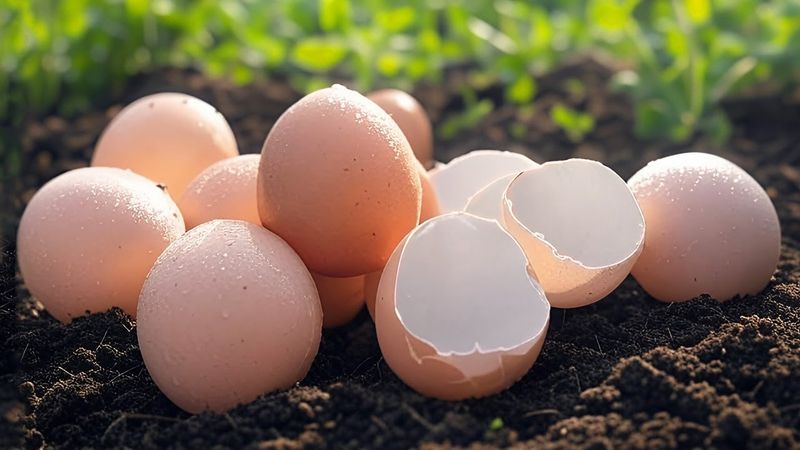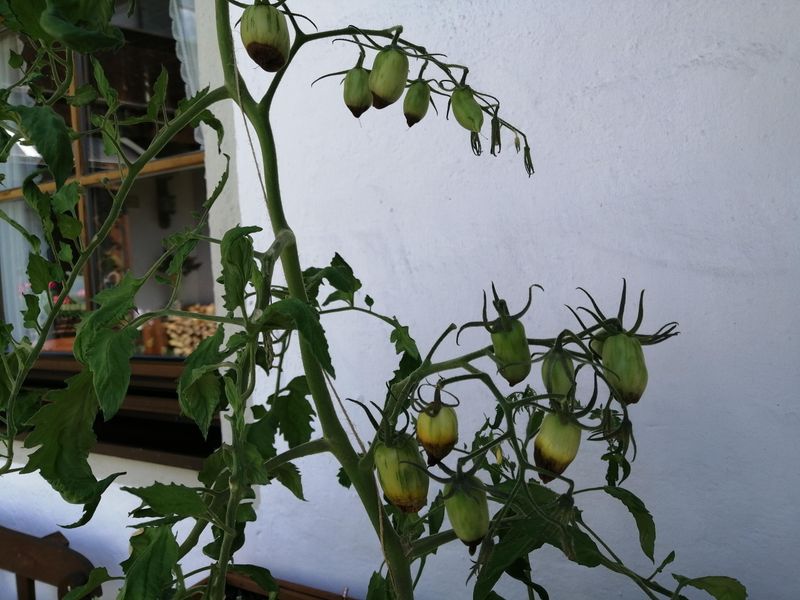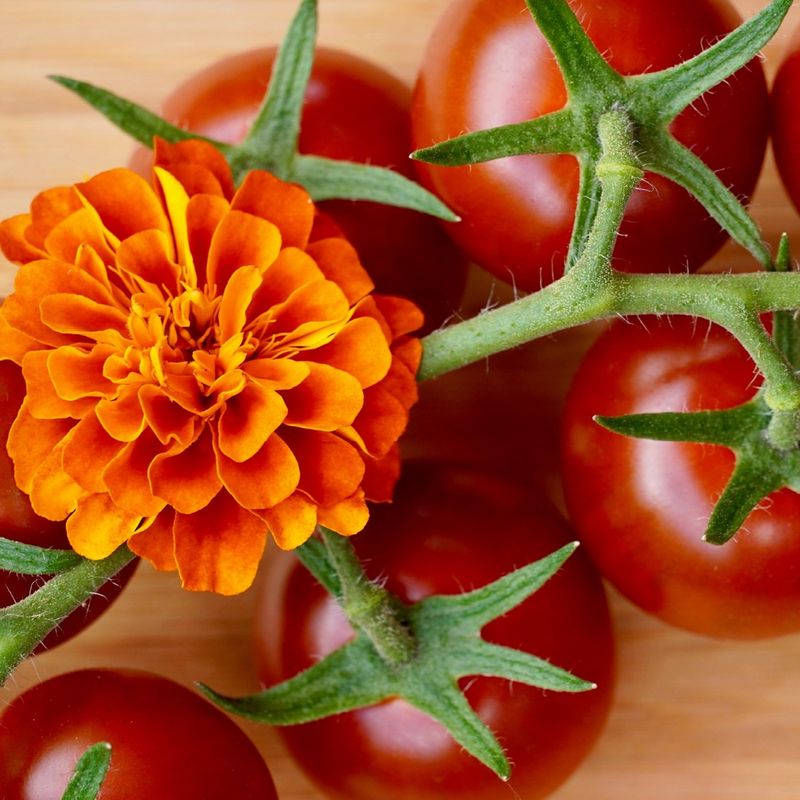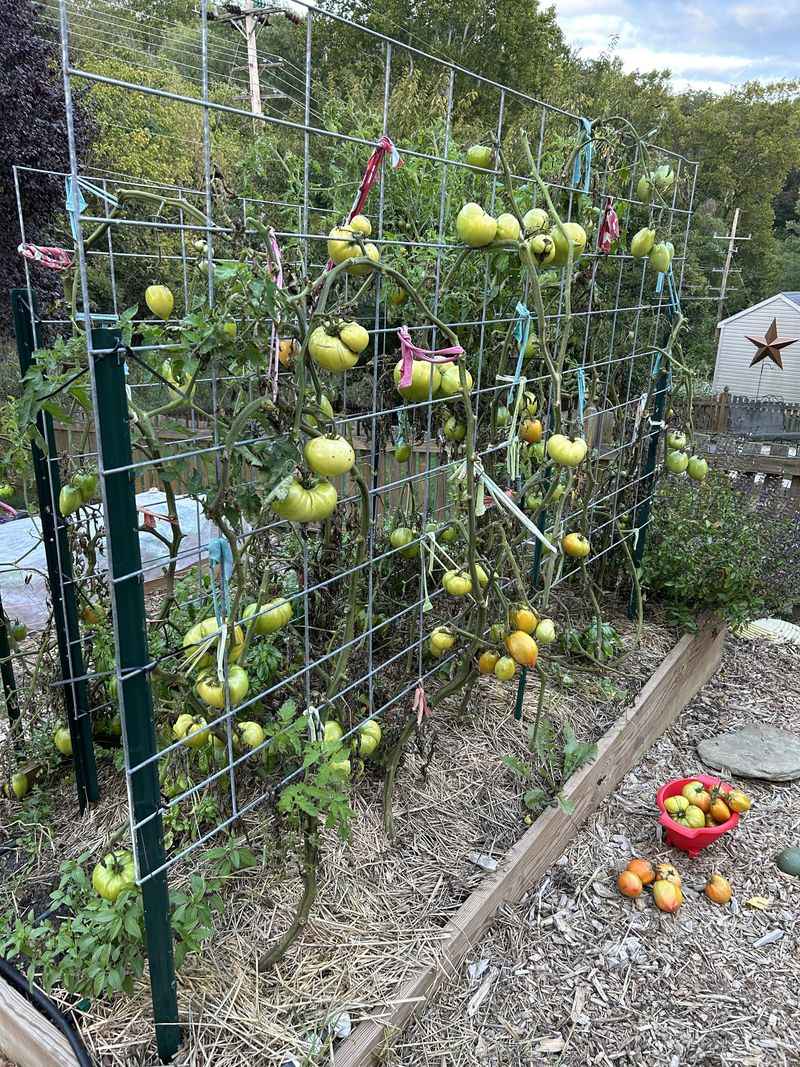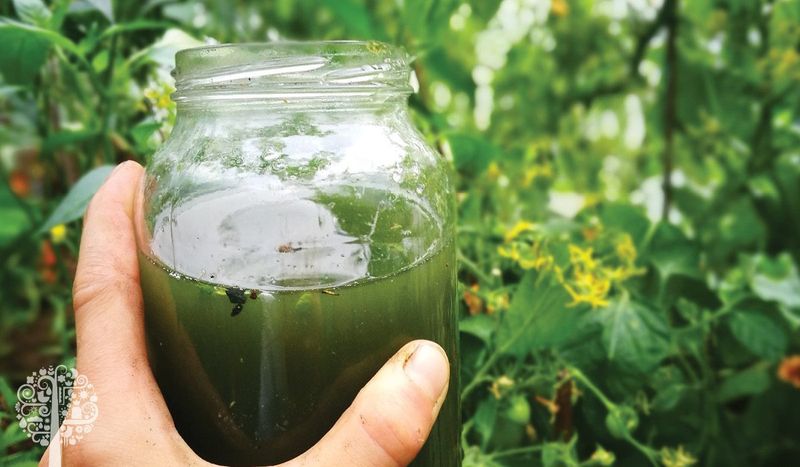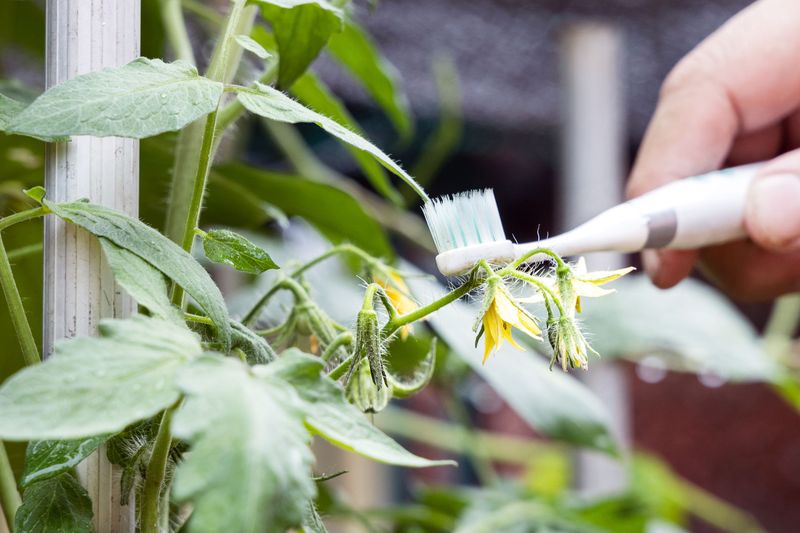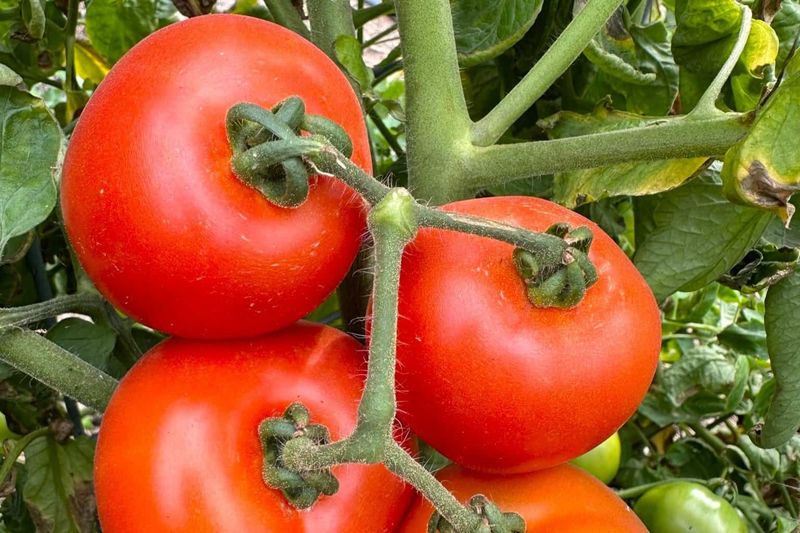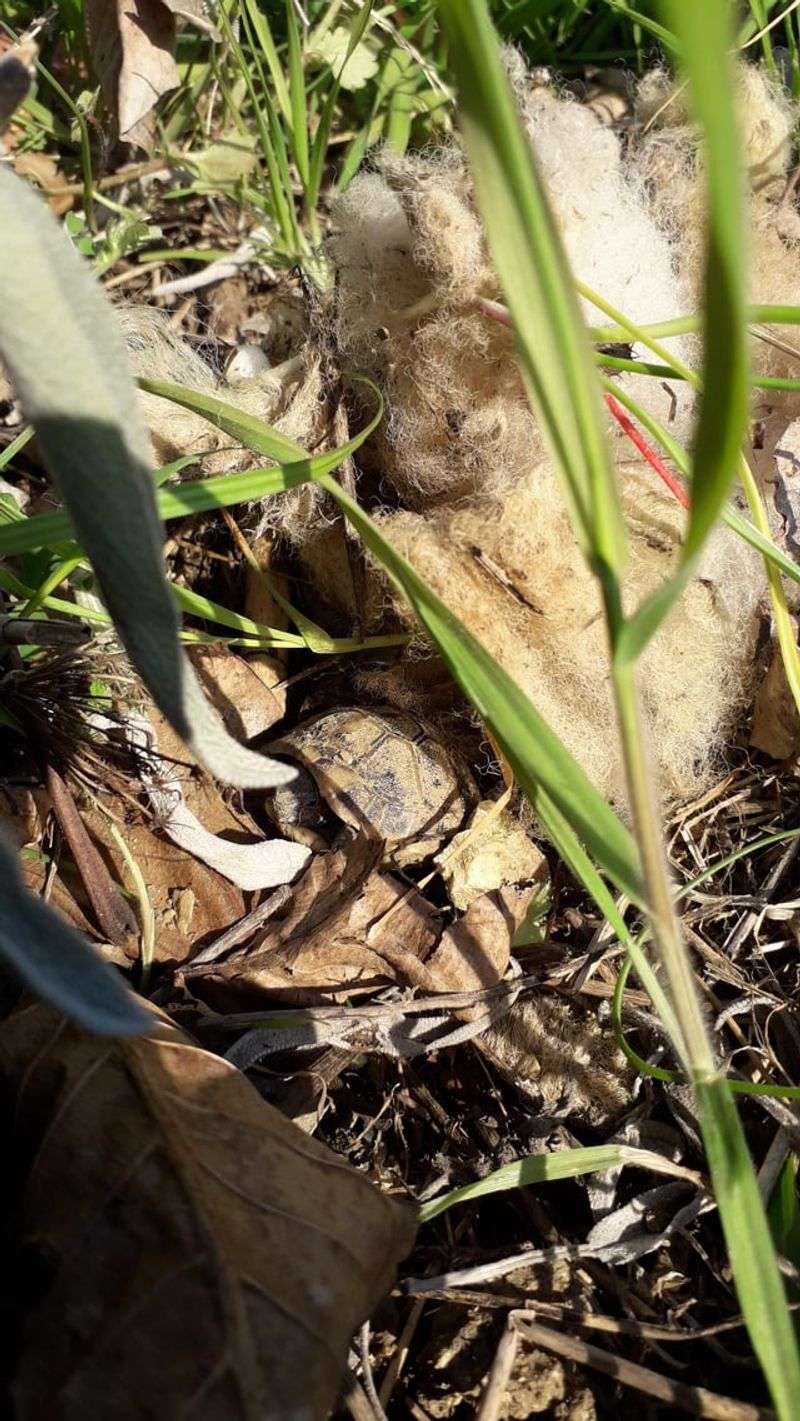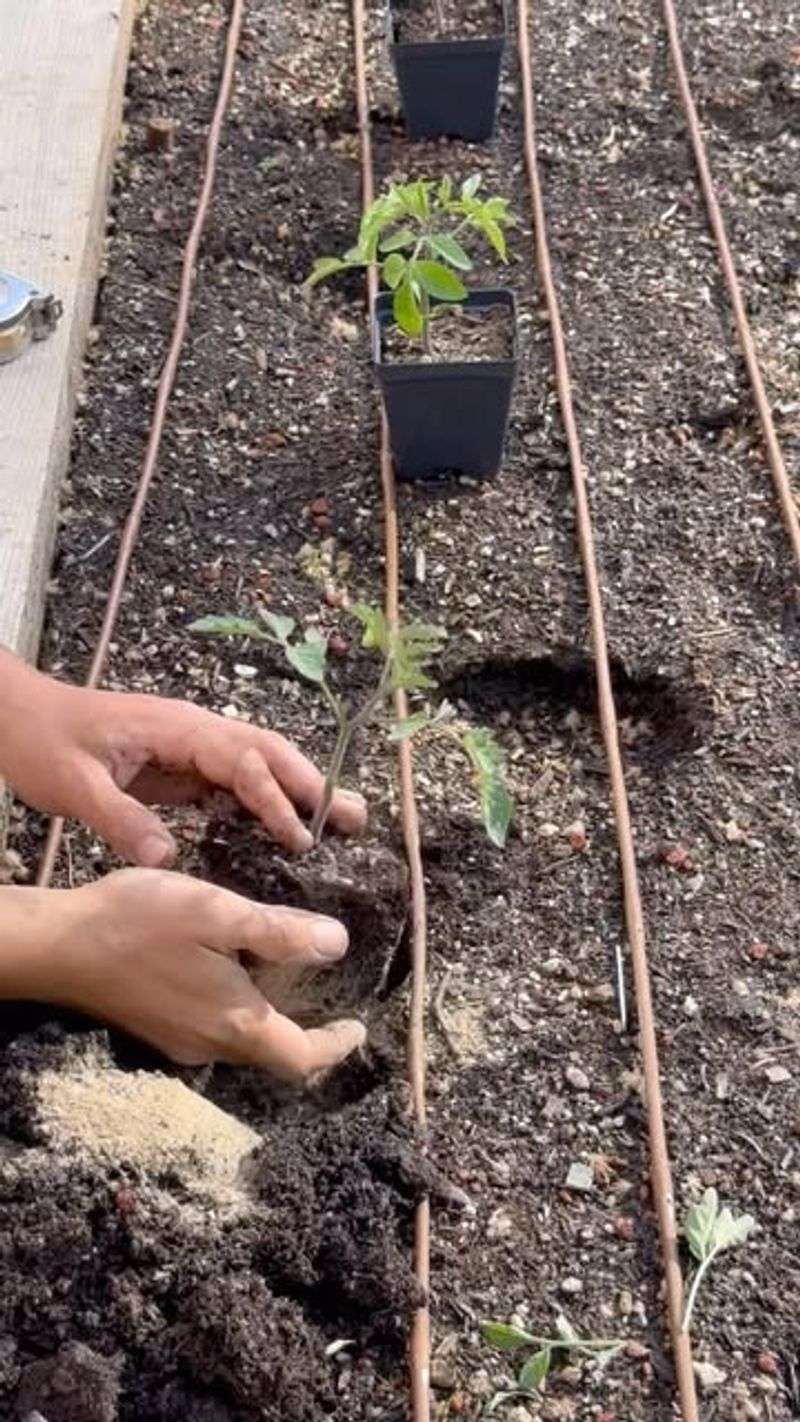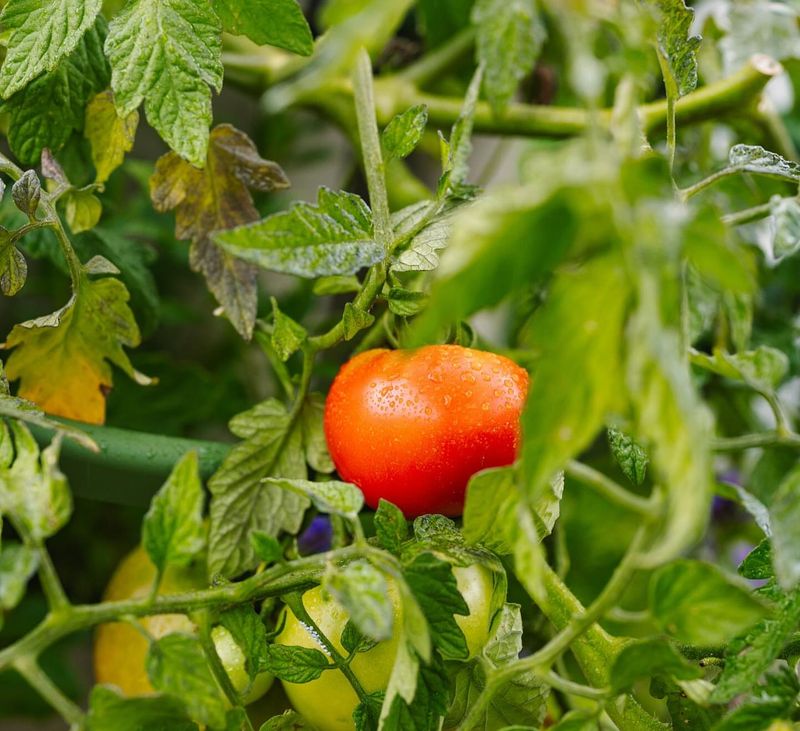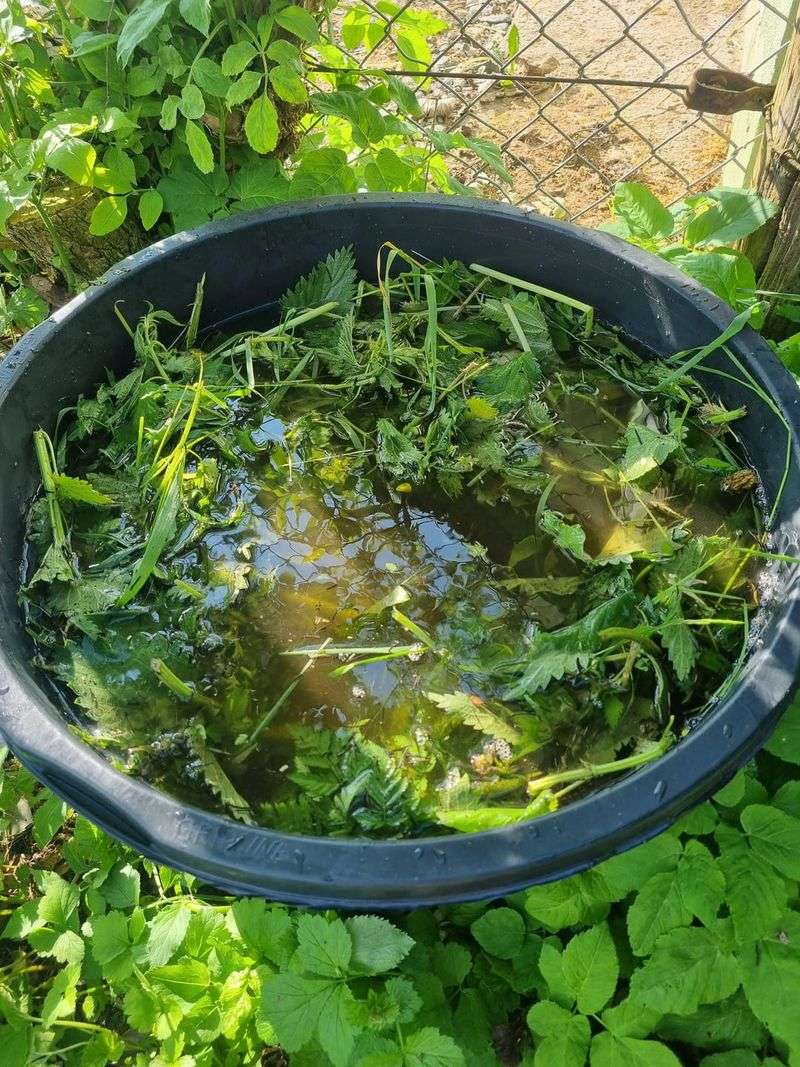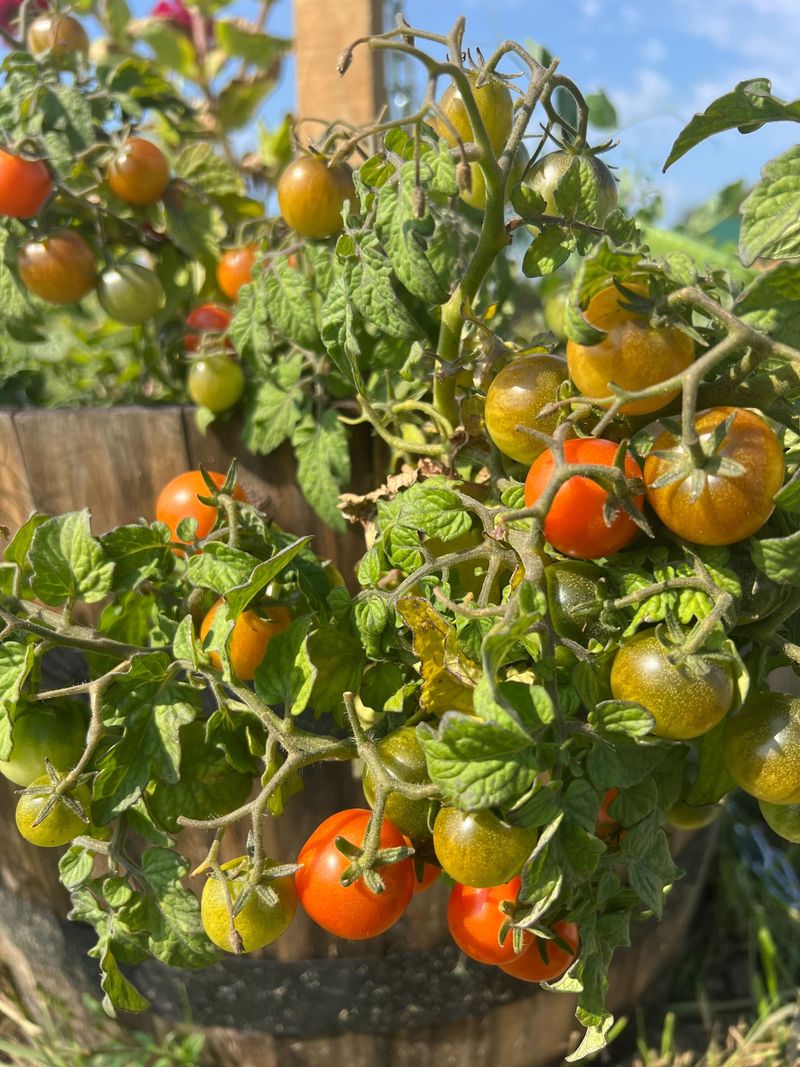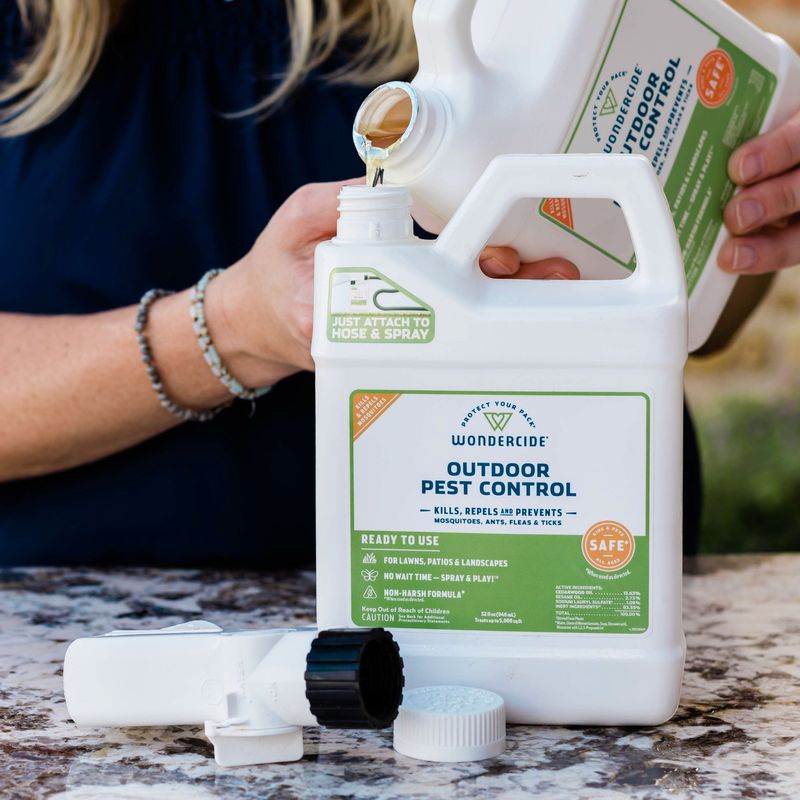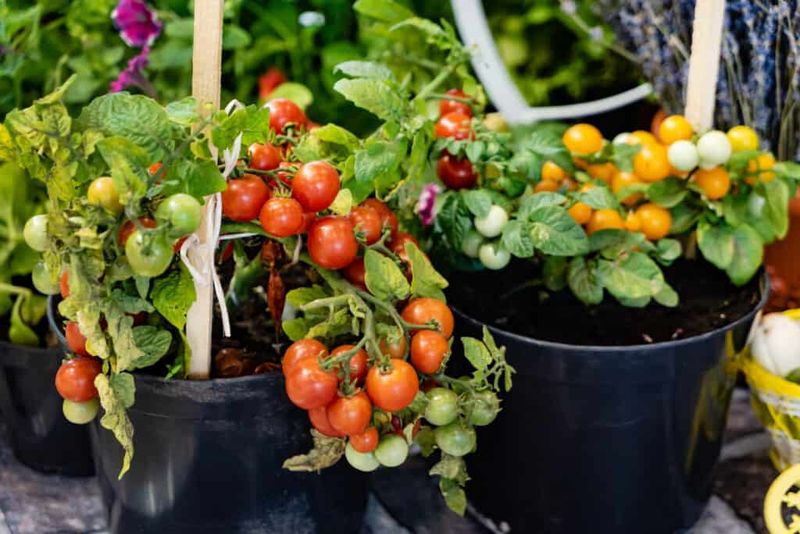I used to think you needed fancy fertilizers and sprays to grow big, healthy tomatoes—until I watched my Amish neighbors do it differently. Their gardens overflowed with giant, flavorful tomatoes, all without a single chemical. I couldn’t believe how simple their methods were.
They rely on old-fashioned techniques like composting, crop rotation, and companion planting—things our great-grandparents probably used too. It’s all about working with nature, not against it.
After learning from them and trying it myself, I’m hooked. These natural tips don’t just grow better tomatoes—they make gardening feel more grounded and rewarding. Once you taste the difference, there’s no turning back.
1. Eggshell Planting Boost
Crushed eggshells in the planting hole create a calcium-rich foundation that prevents blossom end rot. My grandfather collected shells all winter for spring planting, and his tomatoes never showed those dreaded black bottoms.
The sharp edges also deter cutworms that might chew through young stems. I’ve watched many gardeners lose seedlings overnight to these pests, but this simple barrier works wonders.
Just make sure to crush them finely. The smaller the pieces, the faster they break down and feed your plants throughout the growing season.
2. Fish Head Fertilizer
Burying fish heads or scraps 12 inches below where you’ll plant provides slow-release nutrients all season. The decomposing fish creates a protein-packed feeding zone for roots to grow toward.
This old practice feels strange at first, but I’ve never seen healthier plants than those growing above fish scraps. They develop stronger stems and more abundant fruit set than those with commercial fertilizers.
The deep burial prevents any odor issues. My Amish friend Jacob taught me this trick, explaining that fishing and farming have always been connected in their community.
3. Companion Planting Wisdom
Marigolds planted between tomato rows naturally repel nematodes and other harmful insects. The strong scent confuses pests looking for tomato plants while attracting beneficial pollinators.
Basil makes another perfect neighbor, improving flavor and growth while deterring hornworms. I was skeptical until trying this pairing – the difference in taste was remarkable, and I spotted fewer pests all summer.
Carrots planted nearby loosen soil for tomato roots. This three-plant guild creates a natural balance that strengthens each plant without any sprays or powders.
4. Trench Planting Method
Lay long tomato seedlings sideways in a shallow trench rather than digging deep holes. Cover most of the stem with soil, leaving just the top leaves exposed. New roots will form all along the buried stem.
This method shocked me when I first saw it in an Amish garden. What looked like plant abuse actually creates incredibly sturdy plants with extensive root systems that can access more water and nutrients.
The technique works especially well in areas with cool springs. The shallow-buried roots warm faster in spring soil, giving plants an earlier start than conventional planting.
5. Wood Ash Soil Amendment
Sprinkle wood ash from hardwoods around tomato plants to provide potassium and naturally raise soil pH. Tomatoes thrive in slightly sweet soil, and this free amendment delivers exactly what they need.
I collect clean fireplace ash all winter in metal buckets. By spring, I have enough to treat several rows. The plants respond with noticeably darker green leaves and stronger stems within weeks.
Just use it sparingly – a thin dusting around each plant is plenty. Too much can make soil too alkaline, but the right amount gives tomatoes that extra vigor that leads to bigger harvests.
6. Comfrey Tea Feeding
Comfrey leaves steeped in water create a potent natural fertilizer rich in potassium – perfect for flowering and fruiting. The fermented tea smells terrible but works better than any store-bought solution I’ve tried.
My Amish neighbor keeps a dedicated comfrey patch just for making this brew. She fills a bucket with leaves, adds water, and lets it steep for two weeks before diluting and applying to plants.
The results speak for themselves – plants fed with comfrey tea produce noticeably more flowers and subsequently more fruit. For years, I wondered how her tomatoes outproduced mine despite similar care.
7. Deep Straw Mulching
Apply a thick 6-8 inch layer of clean straw around plants once they’re established. This deep mulch keeps soil consistently moist, prevents weed growth, and creates a clean barrier between fruit and soil.
The straw slowly breaks down, feeding soil organisms that benefit your plants. When I first saw how much straw Amish gardeners used, it seemed excessive – until I noticed how rarely they needed to water.
Make sure to keep the straw a few inches away from the main stem to prevent rot. As an added benefit, the light color reflects sunlight back up to lower leaves and developing fruits.
8. Hand Pollination Technique
Gently tap flowering stems with a small stick around midday when pollen is most active. This simple action mimics the vibration of bees and helps distribute pollen within flowers, improving fruit set dramatically.
My Amish friend Sarah walks through her tomato rows every other day during flowering, tapping each cluster. Her consistent harvests made me a believer in this simple practice that takes just minutes.
The technique is especially valuable during periods of high humidity or rain when natural pollinators are less active. I’ve seen it increase yields by at least 30% in my own garden during difficult weather.
9. Epsom Salt Boost
A tablespoon of Epsom salt dissolved in a gallon of water provides magnesium that tomatoes crave. Applied every two weeks during fruiting, it prevents yellowing leaves and strengthens the overall plant health.
This remedy has been passed down through generations of Amish gardeners. The first time I tried it on yellowing plants, the transformation was remarkable – new growth emerged deep green within days.
The magnesium helps plants better utilize nitrogen and phosphorus already in the soil. I’ve found this solution works better than commercial fertilizers for correcting common nutrient deficiencies that plague tomatoes.
10. Buried Wool Fertilizer
Raw sheep wool buried beneath planting rows provides slow-release nitrogen and creates air pockets that improve drainage. As it breaks down, it feeds plants for the entire season.
This technique came from an Amish farmer who raised both sheep and vegetables. The wool scraps that couldn’t be used for spinning became valuable garden amendments instead of waste.
I tried this in one test row and was amazed at the difference. The plants grew nearly twice as tall as others and produced until frost. The wool holds moisture during dry spells while still allowing excess water to drain away.
11. Moon Phase Planting
Sowing tomato seeds during the waxing moon (increasing light) promotes strong above-ground growth. The Amish carefully time their planting to align with these natural cycles, believing the moon’s gravitational pull affects water in both soil and plants.
I was skeptical of this practice until comparing notes with my neighbor over several seasons. His moon-timed plantings consistently germinated faster and produced earlier harvests than my randomly-timed ones.
Transplanting during the second quarter phase (just before full moon) gives seedlings their best start. My grandfather’s planting calendar had these phases marked specifically for different crops.
12. Willow Water Rooting Solution
Soaking fresh willow twigs creates a natural rooting hormone that helps tomato cuttings develop strong roots. The same compounds that help willows root easily transfer to your tomato slips.
My Amish friend Emma taught me this trick when I admired her ability to propagate dozens of plants from a few favorites. She simply places willow branches in water until it turns light amber, then uses it to water cuttings.
I’ve used this to clone my best-producing heirloom varieties. The success rate is remarkable – nearly every cutting develops roots within two weeks, without any commercial rooting products.
13. Nettle Tea Fertilizer
Stinging nettles fermented in water create a nutrient-rich liquid feed high in iron, magnesium and nitrogen. Plants respond with vigorous growth and deeper green foliage within days of application.
I wear gloves to harvest young nettles before they flower, filling a bucket halfway before adding water. After steeping for two weeks, the resulting dark brew gets diluted 1:10 with water before application.
This powerful plant food costs nothing but delivers results that expensive fertilizers can’t match. My Amish mentor uses this brew on everything, but I’ve found tomatoes especially respond to its balanced nutrients.
14. Vertical Growing With Natural Supports
Training tomatoes up corn stalks creates a natural trellis system that allows both plants to thrive. The corn provides structural support while tomatoes receive ideal sunlight exposure for maximum fruit production.
This companion method saves garden space and improves air circulation, reducing disease problems. I was amazed at how well these plants complemented each other when I first tried this in my garden.
The key is timing – plant corn 3-4 weeks before tomatoes so stalks are strong enough to support the vines. My Amish friend John has used this system for decades, growing massive amounts of food in a relatively small space.
15. Herbal Pest Control Spray
A mixture of steeped hot peppers, garlic, and onions creates a powerful pest deterrent that won’t harm beneficial insects. The spicy solution confuses and repels common tomato pests through both scent and taste.
I learned this formula from an Amish gardener who hadn’t used commercial pesticides in 60 years. His tomato plants remained remarkably pest-free while neighboring gardens struggled with hornworms and aphids.
The spray needs reapplication after rain, but its effectiveness makes the extra effort worthwhile. My homemade batch kept my tomatoes pest-free all season, even during a year when hornworms were particularly problematic in our area.
16. Weeds Tea Fertilizer
Common garden weeds fermented in water create a free, nutrient-dense liquid fertilizer. Dandelions, lamb’s quarters, and purslane are particularly mineral-rich and make excellent plant food when properly prepared.
The process transforms what most gardeners discard into valuable nutrition. Fill a bucket with weeds (avoiding seeds), cover with water, and let ferment for 1-2 weeks with occasional stirring.
The resulting brew smells terrible but works magnificently when diluted 1:10 with water. My Amish neighbor taught me to see weeds not as enemies but as misplaced resources. This perspective completely changed my approach to gardening.
17. Compost Tea Foliar Spray
Strained compost water sprayed directly onto tomato leaves delivers nutrients through their foliage for immediate uptake. This method bypasses soil entirely, giving plants a quick boost during critical growth stages.
The tea contains beneficial microorganisms that help fight off disease while feeding plants. I was amazed how quickly yellow leaves greened up after just one application – something my Amish mentor predicted with confidence.
Apply early morning when stomata are open and leaves can best absorb nutrients. The first time I tried this method, my plants responded with a visible growth spurt within days that conventional fertilizers never achieved.
18. Crop Rotation Planning
Never plant tomatoes where nightshade family crops grew in the previous three years. This breaks disease cycles and prevents soil nutrient depletion that happens when the same plant family uses the same ground repeatedly.
Amish gardeners maintain detailed records of what grows where, planning rotations years in advance. My neighbor showed me his hand-drawn garden maps dating back a decade – each crop carefully tracked and rotated.
Following beans with tomatoes provides natural nitrogen that tomatoes love. I’ve seen firsthand how this simple sequencing produces healthier plants without any added fertilizers. My best harvests always come from beds where beans or peas grew the previous season.


